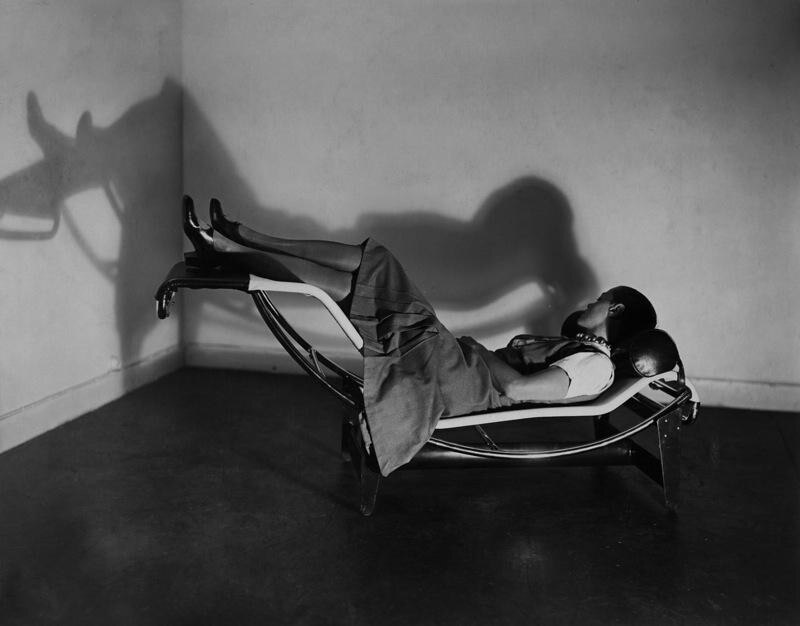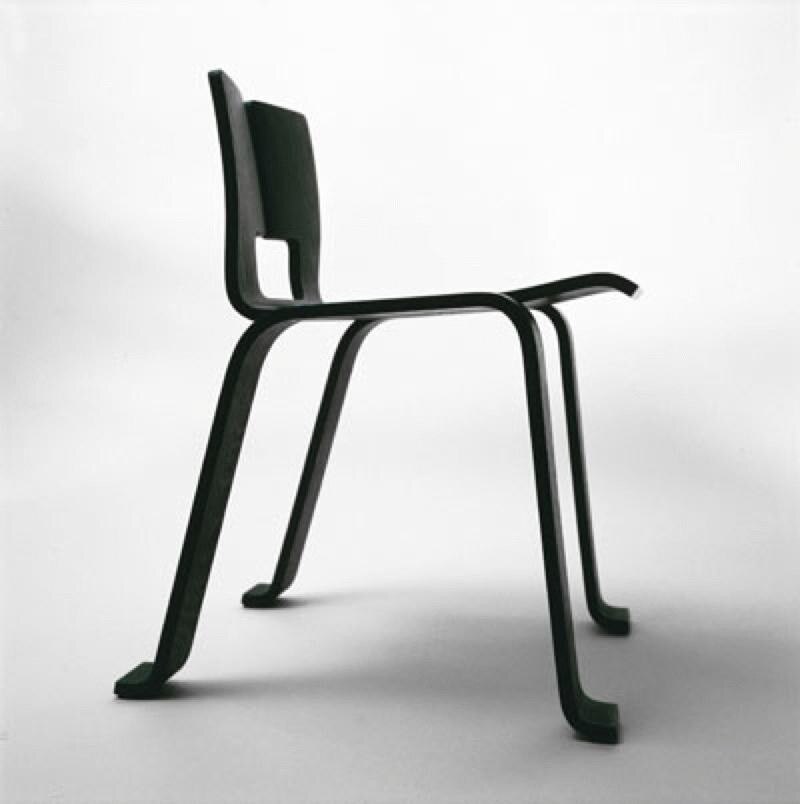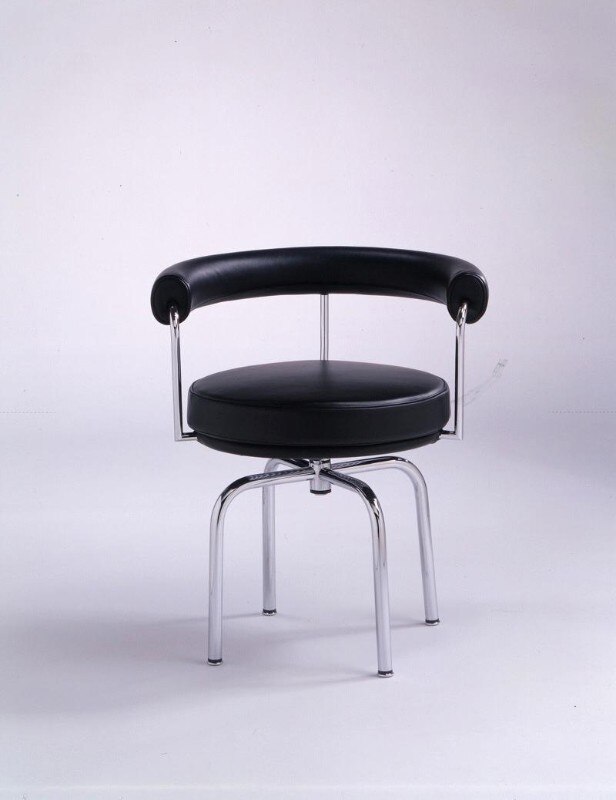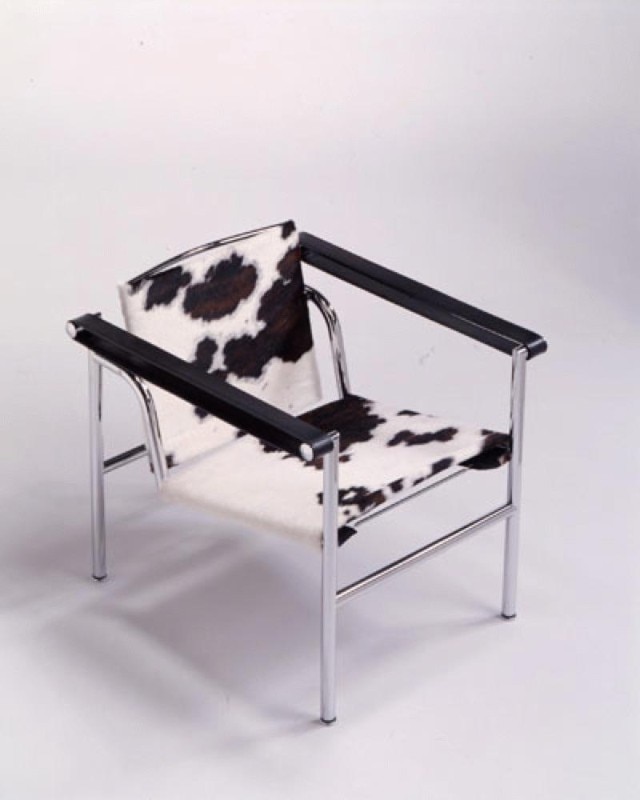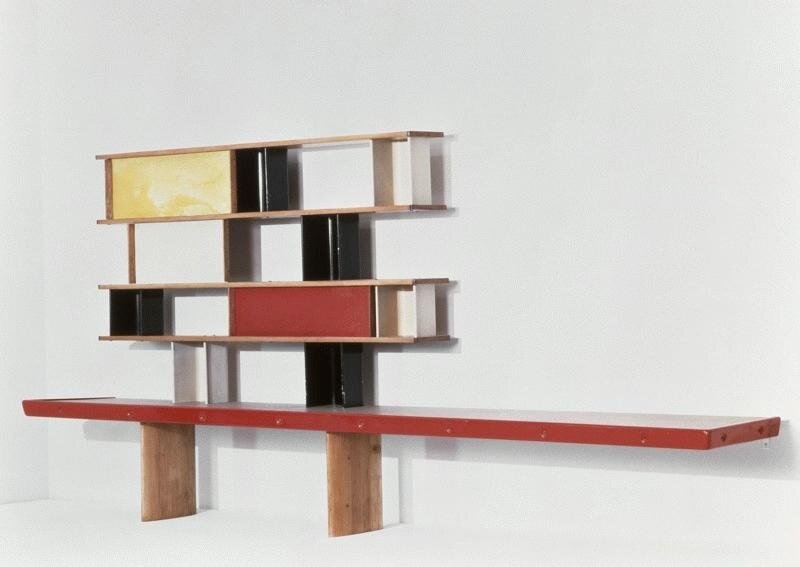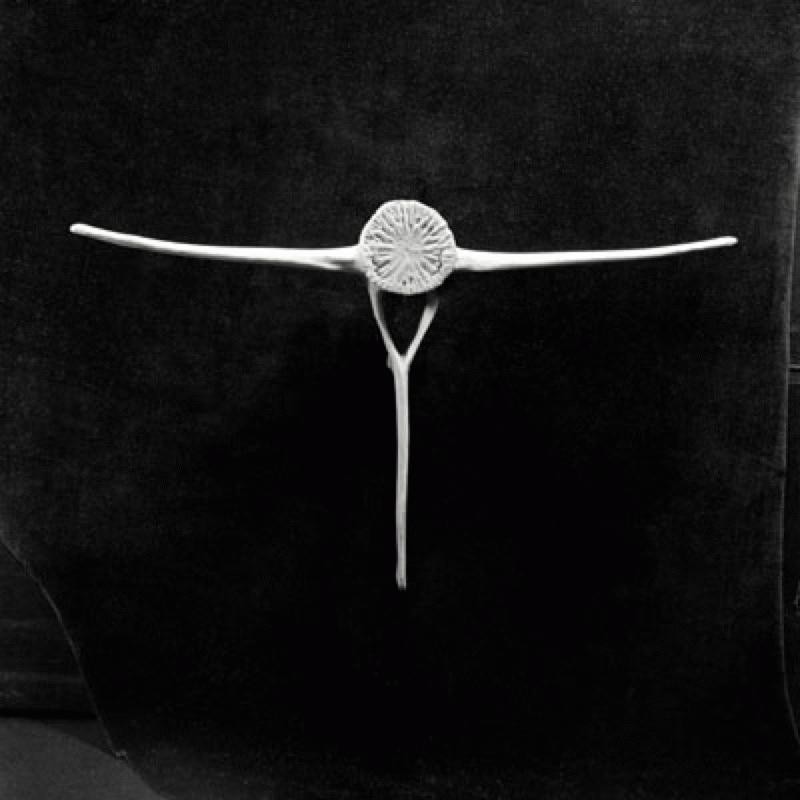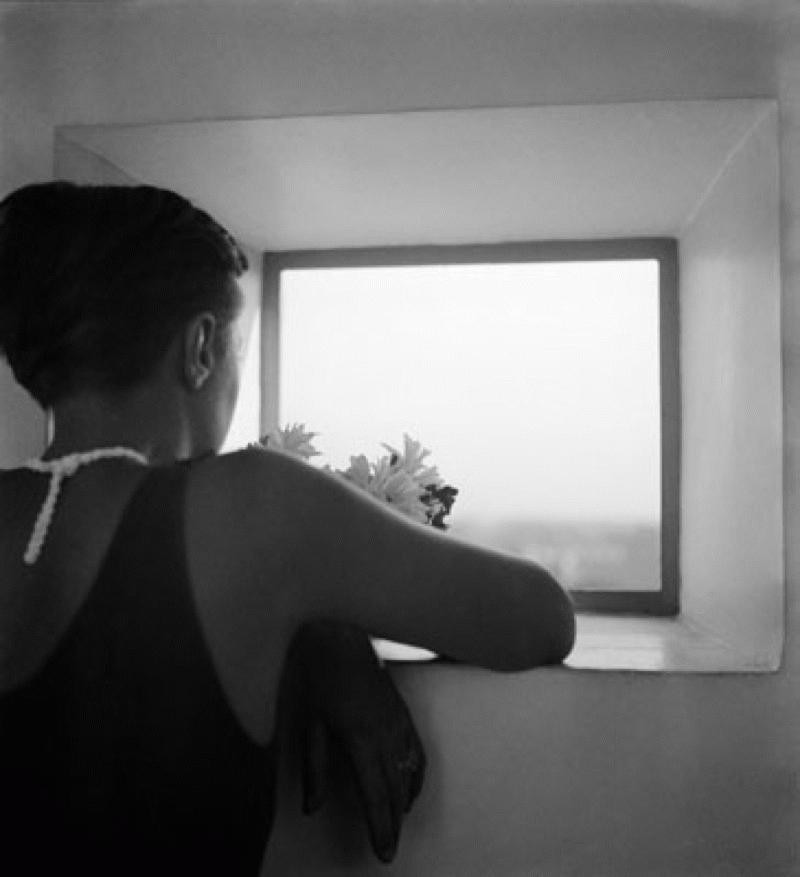The Designer
Charlotte Perriand’s long and multifaceted career spans much of the modernist period in France. Aged just 24, and soon after completing her studies at the École de l’Union centrale des arts dé- coratifs, Perriand achieved international recognition as a studio partner of Le Corbusier and Pierre Jeanneret when she developed designs for tubular steel furniture including the “Chaise longue basculante” (1928). In the 1930s, Charlotte Perriand turned toward wood as a natural material, deriving free forms from it. This conjunction of an interest in material and in form – which resulted in designs for shelving, tables, armchairs, and stackable plywood chairs – remained a preoccupa- tion well into the 1950s. Numerous furniture designs by Charlotte Perriand have remained in production. Exhibition visitors will be able to try out more than a dozen different models currently in production by the firm of Cassina, thereby acquiring a direct sense of their qualities.
The Photographer and Activist
Beginning in the early 1930s, the medium of photography, pursued by Perriand in a radically modernist mode, began to provide important impulses for her work as a whole. Produced now were grandiose arrangements of magical found objects along shorelines or at scrapyards. Perriand shared an interest in the poetic aspect of so-called “Art Brut” with Pierre Jeanneret and Fernand Léger, with whom she worked repeatedly during this period.
But Perriand also employed the photographic medium for large-format photographic-text collages which she realized for exhibitions. In 1936, at the Paris Salon des arts ménagers, she showed a didactically convincing juxtaposition: on the one hand, a large ensemble measuring 3 x 15 m entitled “La Grande Misère de Paris,” which dealt with the precarious life circumstances facing many residents in the French metropolis. On the other, a display of well-priced furniture designs for private residences. A year later, in 1937, she collaborated with Fernand Léger to design the pavilion for the French Ministry of Agriculture at the Paris World’s Fair. In such powerful ensem- bles, she united her own photographs with those by other artists to shape pleas addressing societal concerns.
Essential portions of these ephemeral works will be reconstructed especially for this exhibition. Moreover on view will be numerous works which have never been seen before, in particular those drawn from the estate of Charlotte Perriand in Paris, whose wealth of holdings have been made available for the first time without restriction in the context of a public exhibition. Special attention is devoted to the themes “landscape” and “architecture” as well as to the “condition humaine,” to the situations of less privileged individuals in both urban and rural settings. In addition, portraits of Perriand produced by photographer friends provide intimate perspectives of her own life.
The richly faceted work and career trajectory of Charlotte Perriand, who founded her own studio in 1937, represents an early and remarkable instance of the role of women in the field of design during the past century. This exhibition showing circa 350 exhibits provides a long overdue oppor- tunity to rediscover this important and pioneering figure: as a furniture designer, as a photogra- pher, and as a socially committed woman.
The exhibition “Charlotte Perriand” is a co- production of the Museum für Gestaltung Zürich and the Petit Palais – Musée des Beaux-Arts de la Ville de Paris, as well as the Musée Nicéphore Niépce in Chalon-sur-Saône, which specializes in photography. After its initial presentation in Zürich, the exhibition will be on view in spring 2011 resp. end of 2011/beginning 2012 at both of these French institutions.
